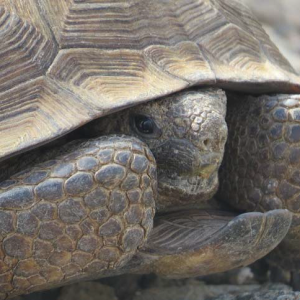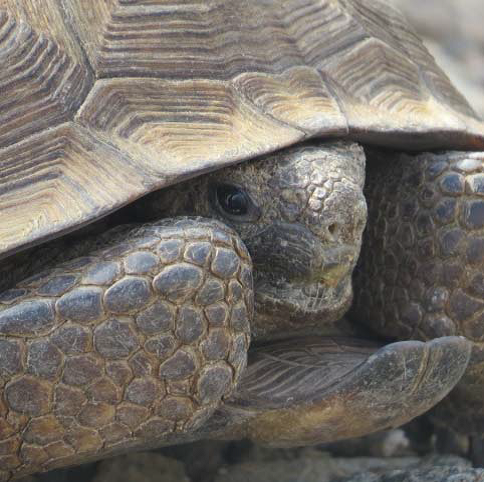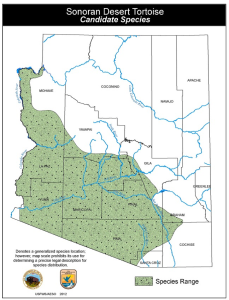 By Philip Haldiman, Editor-in-Chief | Dealmaker
By Philip Haldiman, Editor-in-Chief | Dealmaker
Developers who aren’t familiar with the Sonoran desert tortoise need an introduction.
The tortoise may end up on the endangered species list next year, which could affect current, proposed and future projects.
This species of land turtle inhabits Maricopa, Pinal and Pima counties.
The US. Fish and Wildlife Service has until Sept. 30 to decide if the animal warrants being listed as a threatened or endangered species.
Jim Tress, principal at WestLand Resources, an engineering and environmental consulting firm, told Dealmaker the decision could have a substantial economic impact and that landowners should carefully evaluate their project plans and the timing of those plans to determine how the listing might affect them.
He said if the Sonoran desert tortoise is listed as threatened or endangered, and the species is present on a property, or a proposed project may affect individual tortoises, then work cannot not proceed without authorization from the U.S. Fish and Wildlife Service.
“Listing (the) tortoise would not likely prevent a project from proceeding but, as we have seen on other projects affected by other listed species, listing can affect the configuration of a project, timing of project implementation, and add additional costs associated with conservation measures,” Tress said.
Jordan Rose, president and founder of Rose Law Group, represents developers and homebuilders throughout the state and has been monitoring the status of the Sonoran desert tortoise for years.
“This is the sleeper issue of the decade that developers are not yet paying much attention to,” Rose told Dealmaker. “If the tortoise is listed, it will make development in Arizona’s most populated areas very expensive, and in many locations, impossible.”
Over the years, the tortoise has been threatened by climate change, population growth and development. In 2010, the U.S. Fish and Wildlife Service added the tortoise as a candidate for endangered species protection.
Jeff Humphrey, public outreach specialist for the U.S. Fish and Wildlife Service, told Dealmaker the biggest threat has been the invasion of nonnative grasses, particularly the conversion of Sonoran desert scrub to fire prone grasslands.
He said the population can typically withstand any one of these impacts alone, but can succumb to the combined effects of multiple threats.
The service’s ultimate goal is to intervene and successfully address the needs of a candidate species so that listing is not needed, Humphrey said.
“Right now the question is: What are we doing for conservation for the tortoise? We want to stave off endangerment before it gets on the list,” he said. “What are the primary steps to help stabilize the population?”
The service is conducting modeling and mapping, and could either withdraw the tortoise from candidate status or list it as endangered.
“Next we will take our assessment, put bow on it in a few months, and use it to inform our determination,” Humphrey said.
Since the tortoise became a candidate, a number of federal, state, and local government as well as private entities have developed Candidate Conservation Agreements, voluntary agreements that allow affected citizens to manage their property in ways that benefit the species in order to avoid listing.
If Fish and Wildlife proposes the tortoise as endangered in September, it would likely be placed on the list by September 2016.
Tress is concerned the various conservation plans created for the tortoise might not have an effect on Fish and Wildlife’s decision, and said there have been conflicting scientific studies regarding the population status of the species.
Some studies suggest the tortoise population is declining and that existing risks warrant listing the species, while other studies suggest the population is stable, he said.
“Given their previous findings, many who have been following this issue think it likely that the tortoise will be proposed for listing,” Tress said. “However, there are many questions that must be resolved before that finding is made.”
ABOUT THE SONORAN DESERT TORTOISE
Coloring: gray to orange-brown, with a high, domed shell.
Size: eight to 15 inches in length and four to six inches in height. May weigh eight to 15 pounds as adults.
Home: predominantly desert scrub habitat.
Food: primarily herbivores, a variety of fresh, residual, and dried annuals, perennials, and plant litter.
Activity: largely inactive from mid-October to late February or early March when they overwinter in constructed burrows or rocky cavities or crevices.
Source: U.S. Fish and Wildlife Service












